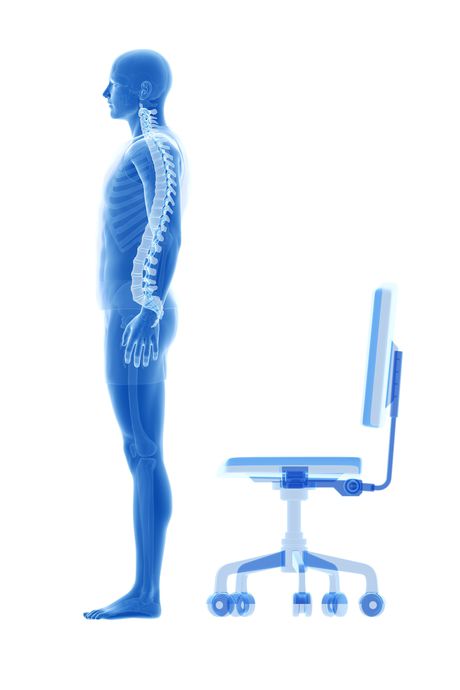Fast facts: The health impacts of poor sitting posture

Many Australians spend 60 hours or more a week sitting down at work, during their daily commute or during recreational activities.
Incorrect sitting behaviours and poor posture are major factors contributing to the rise of musculoskeletal disorders (MSD), which are damaging to people’s health and a significant and rising cost for Australian business.
With an increasing awareness of the risks and costs of incorrect posture in the workplace, many organisations in Australia are now embracing staff seating as a strategic business investment at an office project stage.
What happens to the spine when going into the sitting position?
- The sitting position causes the spine to lose its equilibrium.
- As a result, spinal muscles are forced to work harder in order to maintain balance.
- This significantly increases static muscle work.
- Over time, muscle fatigue may cause muscular discomfort and potential spasms.
- At the same time, the healthy curve in the lower back flattens, which causes the lumbar discs to compress.
- Also, as only the outer rings of the disc have pain-sensitive nerve endings, it is possible to be unaware of damage until it is well underway.
Sitting facts
- It is known that sitting for over an hour induces changes in lipoprotein lipase activity and in the metabolism of glucose that results in deposits of fat in adipose tissue, instead of being metabolised by muscle.
- Sitting for much longer periods is linked to heart disease risks, which is one reason why some people suggest standing at work, as standing uses 20% more muscle activity and burns 20% more calories. However, as sitting uses a lot less energy than standing, it is more suitable for performing fine motor tasks such as computer work.
- Adopting the correct sitting behaviour and maintaining a good posture, combined with regular micro-breaks, is proven to improve levels of comfort and productivity, as well as to reduce the risks of MSDs.
- Sitting correctly in the right type of chair, combined with regular movement, is the key to unlocking wellness and efficiency.
- Movement is crucial to getting blood circulation through the muscles. Research shows that you don’t actually need to do vigorous exercise to get the benefits; simply taking a short walk every 20–30 minutes will work.
- If you continue to sit with little or incorrect support, the risks of long-term health issues are greatly increased.
What a psychologically safe workplace looks like
A personal account from a remote mining site shows how a psychologically safe workplace...
Contract labour in mining: do savings outweigh safety outcomes?
Australian researchers have analysed decades of research on contract labour in mining, arguing...
Psychosocial risk management: eight trends with tips
Psychosocial risk management has become a central pillar of workplace safety and organisational...









